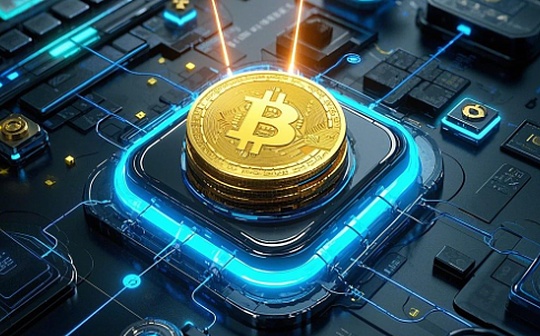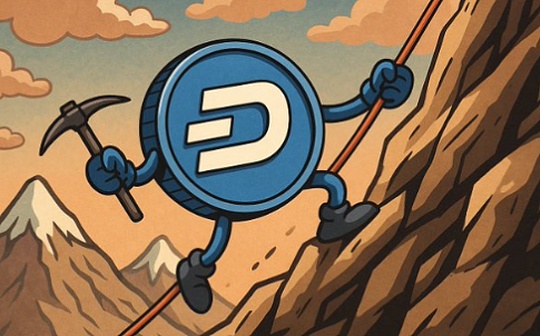
Author: Matt Hougan, Chief Investment Officer of Bitwise; Compiled by: 0xjs@Bitlink Vision
One of the most frustrating things about owning Bitcoin is that it doesn’t perform as you wish in times of crisis.
People buy Bitcoin as a hedge asset, but when the market is turbulent, Bitcoin tends to fall back in the short term.
The last time we saw this happen last week, with rising concerns about tariffs triggering a sell-off in the stock market and Bitcoin.
My colleague Juan Leon is hereWritten an authoritative article.Juan looked at all the situations in which the S&P 500 fell more than 2% in one day over the past decade.He noted that on average, Bitcoin’s decline during these pullbacks actually exceeded the S&P 500 index — down about 2.6%.
ah.
But Juan’s research also shows other situations: If you keep investing — or buy more after a pullback — your returns are good.On average, Bitcoin has risen by an astonishing 190% in the year after these big pullbacks, far exceeding all other assets.
I call this pattern “Dip Then Rip (Callback and then higher)” and historically it is one of the most consistent patterns in cryptocurrencies.
In this week’s memo, I want to explain why this happens.
How Wall Street evaluates assets
Basically, the entire Wall Street revolves around the concept of “net present value”.
Investors know that “net present value” is the calculation of the current value of an asset based on your estimate of the future performance of an asset.
Of course, the most common application is discounted cashflow analysis (DCA): If you have a company that you think will make a profit of $1 per year in the next 20 years, what is its value today?
Obviously it’s not worth $20; why would you give up on $20 today just to get $20 back in 20 years?Instead, you can calculate the value today by “discounting” its future cash flow.
The biggest question when doing DCA is how much you should discount these cash flows.Typically, analysts take a “risk-free rate” (i.e. the current rate for short-term U.S. Treasuries) and then increase it based on the level of uncertainty in stocks and markets.For example, today’s risk-free interest rate is 4.37%.If the company is very secure, you might round it up and apply a 5% discount rate.If the risk is higher, you may adopt a discount rate of 10% or 20% or higher.
As mathematical calculations increase over time, a small change in the discount coefficient will have a huge impact on today’s estimates (net present value).Take our $20 as an example, if you discount those cash flows at an annual interest rate of 5%, the company is worth $12.46 today.If you discount those cash flows at 10% interest rate, the company is worth only $8.51.
The greater the risk, the greater the discount—the lower the price today.
How does this apply to Bitcoin?
Bitcoin has no cash flow, but in my opinion, the same idea applies.
For example, at Bitwise, we believe Bitcoin will be worth $1 million in 2029.So, you might ask, what do we think it is worth now?
It depends on the discount rate, which is the risk you allocate.If you discount at a discount rate of 50% per year, the net present value is $218,604.If you use a 75% discount rate, the net present value is $122,633.
Note that there are two factors that affect Bitcoin’s net present value: 1) estimates of its long-term value (e.g. $1 million by 2029), and 2) discount factor.
Understanding why the tariff war triggered a BTC callback
Now let’s use this framework to understand how the market reacts to tariff-driven callbacks.
News that triggers economic uncertainty has two effects on Bitcoin.Check out what NYDIG (one of the smartest companies in the cryptocurrency space) said while writing about the recent tariff-related selloff:
“What does Bitcoin have to do with the tariff war? It doesn’t matter, it’s just that it’s a liquid, globally available and trading around the clock. If you really want to say anything, it’s that Bitcoin will benefit from rising global entropy and the political and economic chaos caused by governments.”
Please note that they say two things here:
-
In the short term, tariffs pose challenges to Bitcoin and other current assets as they inject uncertainty into the market.In other words, they increase the discount coefficient, i.e., the perceived “risk” of the asset.
-
Tariffs are good for Bitcoin in the long run, as Bitcoin can hedge against political and economic chaos.In other words, they raise Bitcoin’s long-term price target.
Let’s put it back in discount mode and think about math problems.
You might imagine that tariffs raise our long-term price target for Bitcoin from $1 million to $1.1 million by creating economic entropy.At the same time, they increase the discount coefficient we use to calculate the net present value of Bitcoin from 75% to 85%.Mathematically, this will result in Bitcoin’s “net present value” dropping from $122,633 to $109,521 – despite our 2029 price target rising 10%.
So, even though we are more optimistic about Bitcoin than ever, our short-term price targets are down.This explains the reason for the callback.butIf the market stabilizes, the end of the world will not come, the discount coefficient will fall from 85% to 75%, and Bitcoin will recover from the callback and even rebound.
Dip then rip.
Why do I think this framework is useful
It should be clear: I’m not saying that everyone on the market is doing such calculations.Instead, I mean the market’s invisible hand is doing these calculations, exploring to find new price targets.
For long-term investors, it is important to understand this because it can help you focus on the ultimate goal: long-term returns.
If you are a long-term investor, the short-term surge in the codification factor is an opportunity to enter the market at a low price.
From my point of view, I’ve never been so optimistic.








